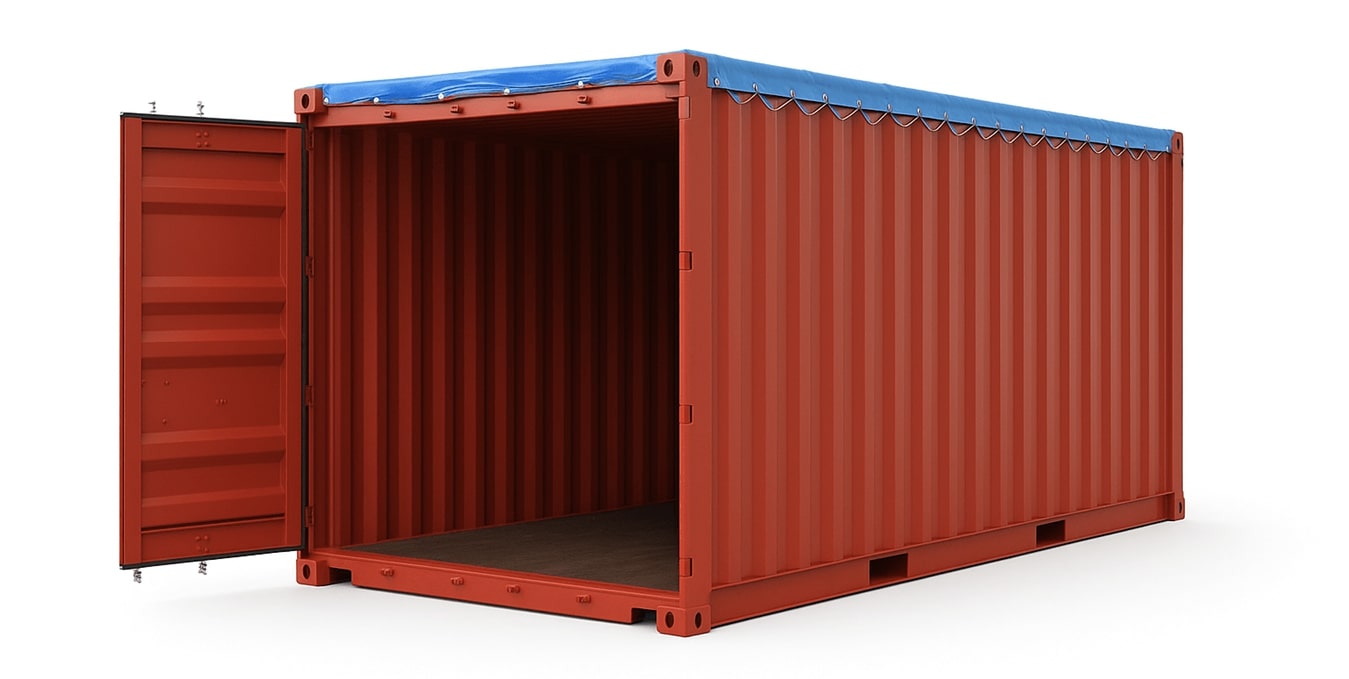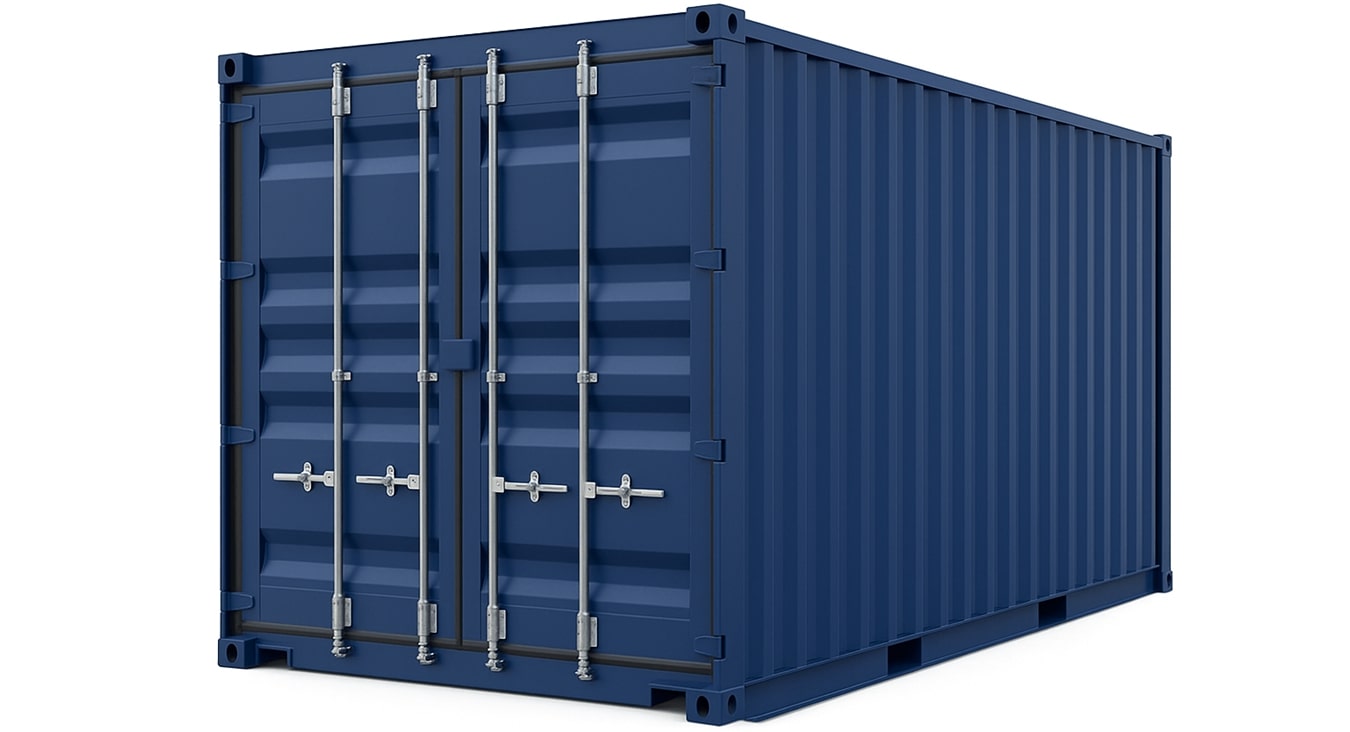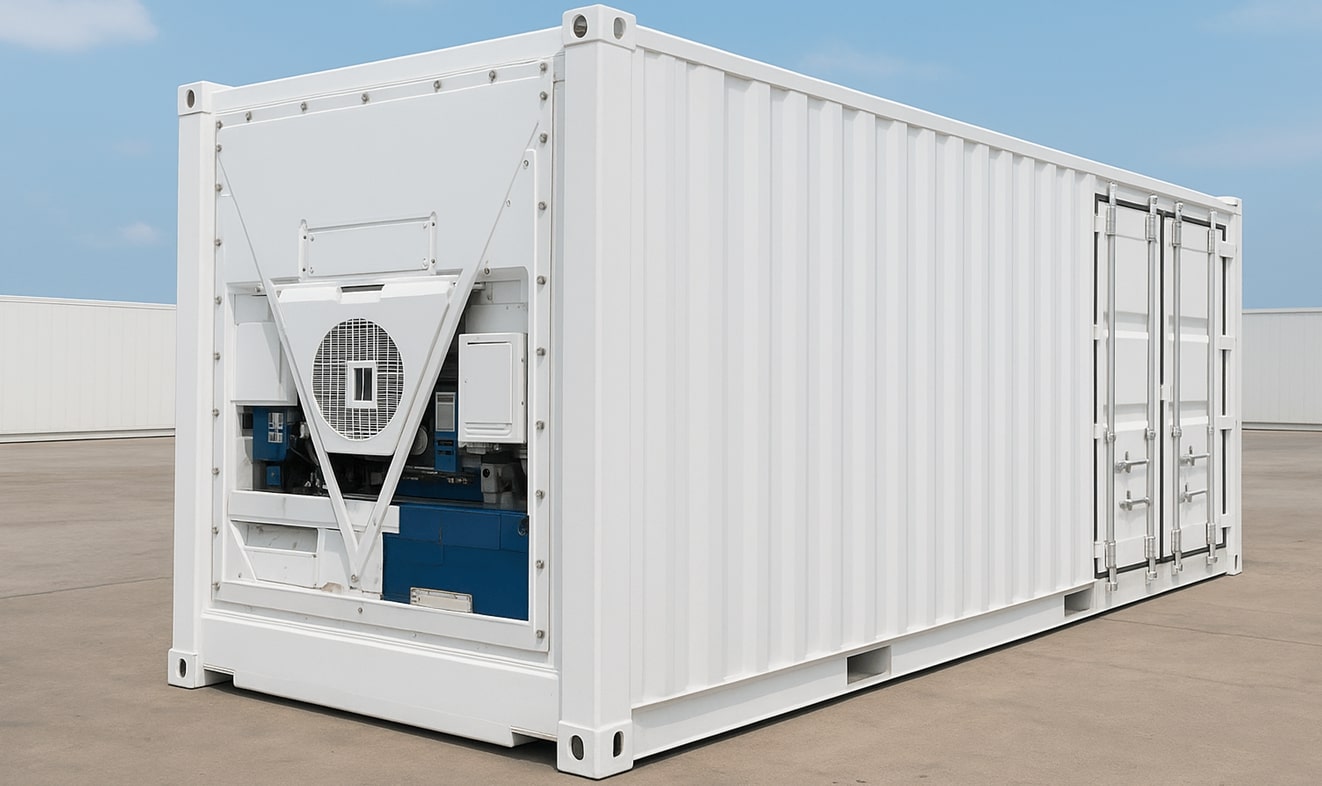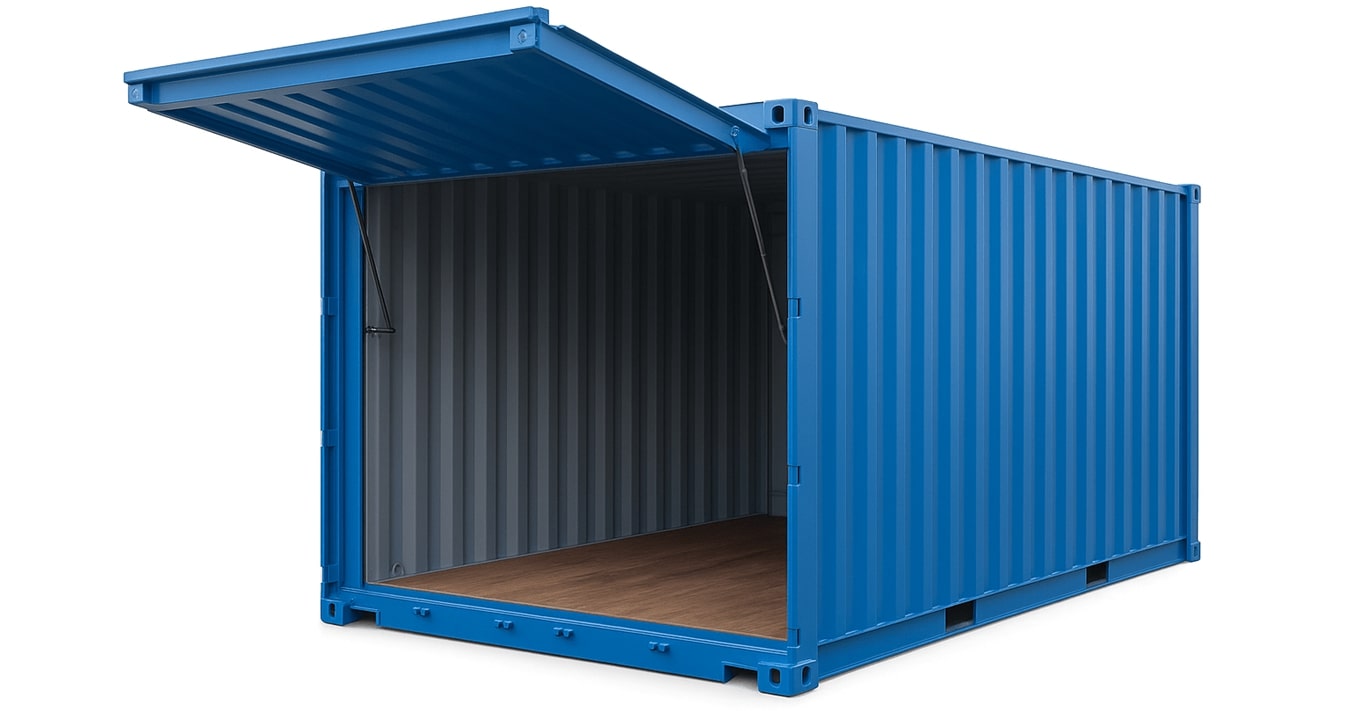Guide to Shipping Containers - Types & Sizes

Did you know that ships carry about 90% of the world's cargo? It should come as no surprise that there are numerous varieties of shipping containers in use, each with a distinct function, in order to hold such a large volume of goods. The type of shipping container that is best for a shipment depends on the kind and size of the cargo. The weight and density of the cargo, its form (solid, liquid, gas, etc.), whether it is temperature-sensitive, and other factors will determine how appropriate a container is.
Now you might be wondering, how many types of containers are there in logistics? Well, there are numerous types of containers, but in this blog, we will look at eight common types of containers and learn about each so that you can make more informed decisions and find out what type of container is right for your goods.
1. Dry Storage Container
When most people imagine a shipping container, they typically think of dry storage containers, also referred to as general-purpose containers. When a controlled temperature is not required, it is used to move cargo that is enclosed in pallets, boxes, flexitanks, barrels, and similar containers. They are usually utilised for general cargo, such as furniture, electronics, and clothing. Dry containers, which come in a range of sizes, are a type of container used to store and move non-liquid goods. These steel or aluminium containers are capable of transporting any kind of material. Steel dry containers have a slightly larger payload than the internal cube, while aluminium containers have a slightly larger carrying capacity than steel containers.
- Commonly found in 20ft, 40ft, and 45ft lengths.
- Ideal for dry goods like electronics, textiles, and furniture.
- Fully enclosed, weatherproof steel body with double rear doors
2. Open Top Container

A dry storage unit with an adjustable top that can be fully removed is called an open-top shipping container. As they can hold more than regular containers, open-top containers are widely used in container transport when goods exceed standard height. Lashing rings are fastened to the corner posts and upper and lower side rails of open-top containers in order to secure cargo. Cable sealing devices and a swing header at the back doors guarantee that the cargo is safe and secure while in transit. This works well for items that are too tall to be loaded through the door, like tall machinery or other heavy, bulky finished goods that require a crane or rolling bridge for handling and loading.
- Generally available in 20ft and 40ft units
- Removable tarpaulin roof for crane loading of tall cargo.
- Transporting machinery, logs, or equipment exceeding standard height.
3. Flat Rack Container
Cartons and palletised goods are stored in a flat rack container. A wide range of lid styles is available for flat rack containers. Collapsible sides allow you to fold this straightforward storage container into a flat rack. For shipping large items like construction materials, heavy machinery, vehicles on tracks, and large reels, the end walls are perfect because they are sturdy enough to allow cargo securing. Goods made in different nations where standard pallet dimensions have been exceeded are frequently transported in these containers.
- Typically comes in 20ft and 40ft configurations.
- Can handle up to 45,000 kg of heavy or oversized cargo.
- Features collapsible or fixed end walls with an open-top and side-access layout for flexible loading.
4. Double Door Containers

Double-door containers have doors on both ends, as the name suggests, and when both sets are open, they create a tunnel. That's why another name for a double-door container is a "tunnel container". In addition to providing even more space for items like steel and iron, double-door containers are very useful for loading and unloading items quickly. Both sets of doors feature weatherproof seals and the same locking assembly to protect cargo from the elements. Cars and other cargo can be transported with ease using this method. The dimensions of double-door containers are similar to those of dry containers.
- Commonly available in 20ft and 40ft options.
- Enables faster cargo handling and easy segregation of goods during transport or storage.
- Ideal for bulk goods, palletised cargo, or frequent-access storage setups.
5. High Cube Containers
A high cube shipping container provides additional vertical space while remaining comparable to a regular container. High cubes, which reach 2.9 metres (9.6 feet) in height, offer more space for cargo, improved ventilation, and more adaptability than standard containers, which are 2.6 metres (8.6 feet) in height. The increased clearance of a high cube container eliminates the need for complicated loading methods or disassembly, saving time and effort for companies that handle tall machinery, large equipment, or stacked goods. A high cube container is unquestionably the better choice for anyone wishing to move or store anything that is a little bit bigger than usual. This is the main reason the high cube container was created in the first place.
- Extra-tall at 9'6"—one foot higher than standard containers.
- Perfect for lightweight, voluminous cargo like furniture or textiles
- Offers around 10–15% more storage space than standard units.
6. Refrigerated (Reefer) Container

Goods that need to be transported in a temperature-controlled environment are transported in reefer containers, also known as refrigerated containers. Each container has a refrigeration unit that is connected to the ship's electrical power source. This kind of container depends on outside power to maintain a controlled temperature and is often utilised by refrigerated delivery services. In order to keep goods fresh during long-distance transportation, warm or cold air is circulated throughout the cargo. Furthermore, warm toxic air created by living products is released from the container through movable ventilation holes in the refrigeration unit. Reefer containers are available in two primary sizes: 20-foot and 40-foot shipping containers.
- Maintains between -25°C and +25°C, depending on cargo needs.
- Easy-to-clean stainless-steel interior with shelving
- Suitable for perishable goods like food, flowers, and pharmaceuticals.
7. Half-Height Containers
Heavy and dense bulk cargo is intended to be transported in half-height shipping containers. Heavy items that don't need the height of a regular container are transported in half-height containers. These are ideal for use in the mining sector because they are effective at moving materials like coal and stone. Half-height containers are more adaptable and durable enough to survive the harsh industrial environment because of their low centre of gravity, which allows them to carry heavier loads more effectively than taller containers. Additionally, half-height containers are simple to load and unload.
- Commonly available in 20ft dimensions with reduced height.
- Built with a lower profile (around 4'3"–4'6" high) for heavy, dense cargo.
- Designed to carry high-weight materials like ores, coal, and construction debris.
8. Open side container

With the exception of the ability to fully open the side doors, open side containers are very similar to standard, general-purpose shipping containers. Material loading and unloading are made simple by this feature's significantly greater space and accessibility. In addition to their many other applications, open-side containers have become more and more popular for shipping goods. Double doors on the side swing out of the way to provide access to nearly the whole length of the container, in addition to doors on the end. This makes it easier to access the cargo that is stored and enables the use of larger equipment for loading and unloading the container.
- Equipped with full-length side doors in addition to standard end doors.
- Allows easy loading of wide or oversized cargo that doesn't fit through regular doors.
- Ideal for bulk goods, retail stock, and quick-access storage applications.
Conclusion
For logistics to run smoothly and safely, choosing the correct kind of container is essential. Every type of container, from dry storage to refrigerated ones, has a specific function in the transportation chain. However, selecting the appropriate container is just one aspect of effective transportation. When combined with reliable side loader hire, you can be sure that your containers will be loaded, moved, and positioned promptly and safely.

